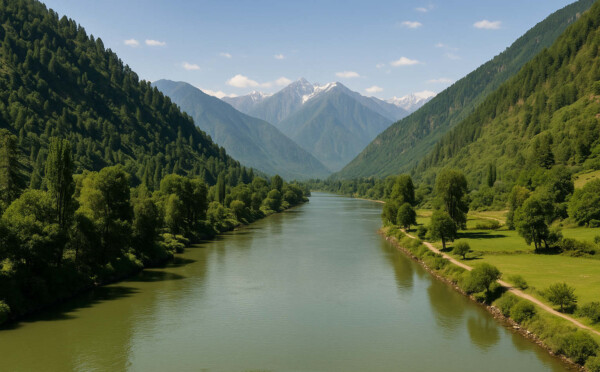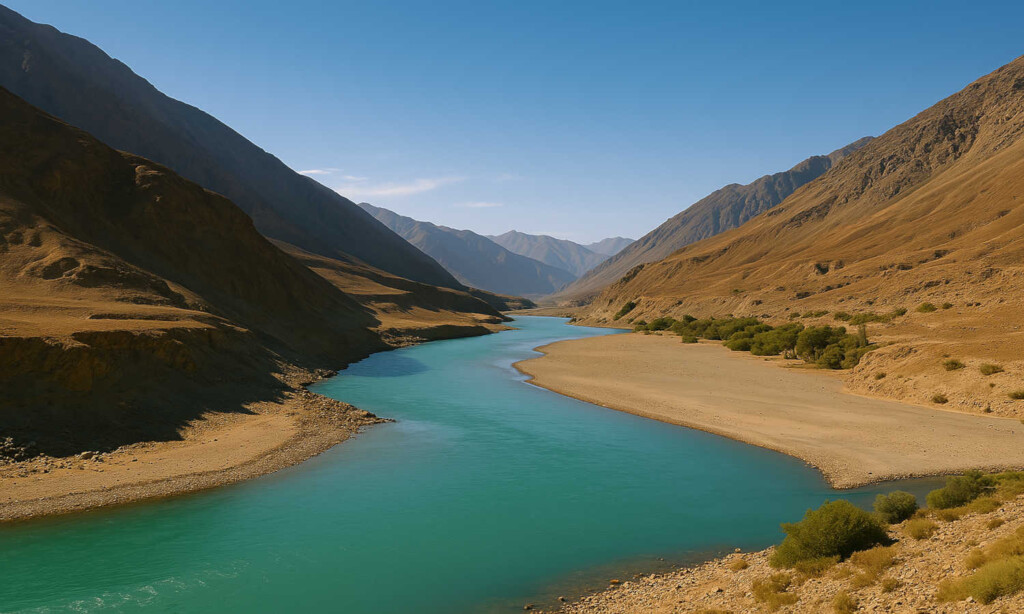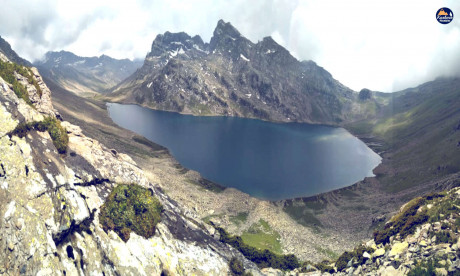The Indus River is one of the most significant waterways in Jammu and Kashmir, shaping landscapes, supporting agriculture, and sustaining local biodiversity. Flowing through Ladakh, it has played a vital role in history, culture, and ecological balance for centuries.
Geographical Importance of the Indus River
Originating from Lake Manasarovar, the Indus River enters India through southeastern Ladakh, meandering through valleys and mountains, making it a crucial water source for the region.
1. Indus River Basin – The Heart of Ladakh’s Ecosystem
- Supports agriculture in Leh, Kargil, and nearby villages, providing irrigation for barley, wheat, and vegetable cultivation.
- Major tributaries, including Zanskar, Shyok, and Nubra Rivers, enhance its flow and ecosystem diversity.
2. Ecological Role of the Indus River
- Sustains wetlands, glacial ecosystems, and local wildlife.
- Conservation efforts help maintain the pristine environment of Jammu and Kashmir.
Cultural and Historical Significance of the Indus River
The Indus River has shaped civilizations, influencing trade and religious traditions.
3. Ancient Civilizations Along the Indus
- The Indus Valley Civilization thrived along its banks.
- The river served as a trade route connecting Tibet, India, and Central Asia.
4. Spiritual Connection – The Sacred Indus River
- Revered by Buddhist and Hindu communities, who offer prayers and rituals.
- Annual religious ceremonies and festivals highlight its importance.
Tourism Along the Indus River
The Indus River attracts adventurers, photographers, and nature enthusiasts seeking breathtaking landscapes.
5. Top Attractions Along the Indus River
- Sangam Point, Leh – The stunning confluence of the Indus and Zanskar Rivers, a must-visit photography spot.
- River Rafting Adventures – Experience thrilling rafting near Nimo Village.
Environmental Challenges & Conservation Efforts
Preserving the Indus River is crucial due to climate change, pollution, and human interference.
6. Sustainability Measures
- Focus on responsible tourism and eco-friendly practices.
- Government-backed initiatives aimed at reducing pollution and conserving Ladakh’s ecosystem.
The Indus River in Jammu and Kashmir remains a lifeline for communities and a key element of India’s natural and cultural heritage. Whether admired for its historical significance or scenic beauty, the Indus continues to be a treasured landmark in the Himalayan region.







